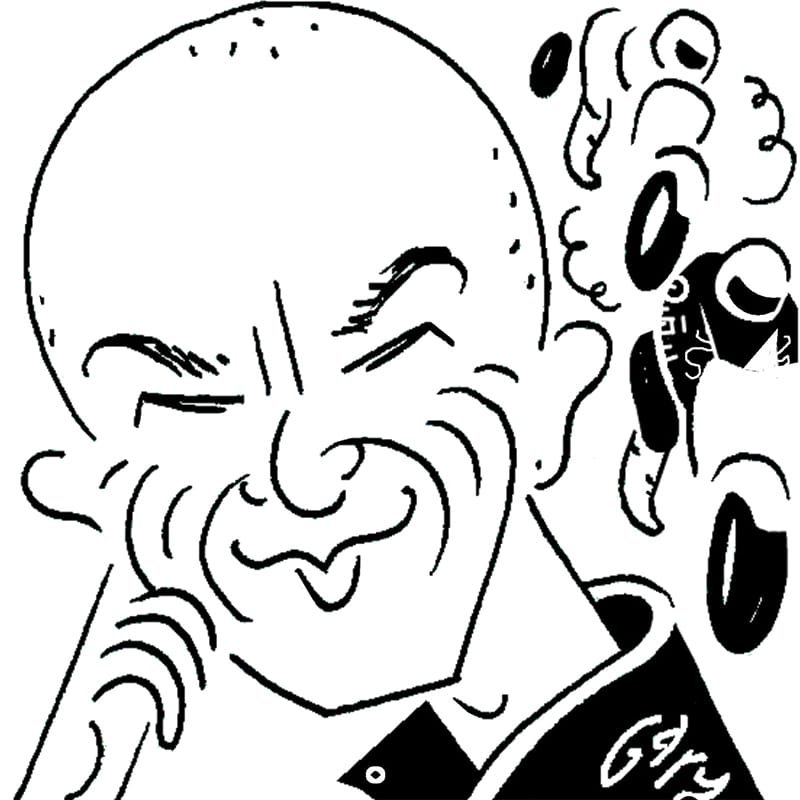Mat Oxley: ‘Honda and Yamaha don’t fully understand how MotoGP game has changed'
The Japanese marques simply haven’t kept pace with MotoGP’s technological revolution
Many people in the MotoGP paddock – including rights-holder Dorna – are worried that the last remaining, embattled Japanese factories will quit the championship. Merely thinking this a few years ago would have been ridiculous, but not any more.
Suzuki withdrew from MotoGP at the end of last season, despite having won the championship as recently as 2020 and winning two of the last three races of 2022.
So far this year Honda and Yamaha have been humiliated by their European rivals: Italian brands Ducati and Aprilia and Austrian brand KTM. Twenty-two of the 24 podium positions at the first eight grands prix were occupied by riders of European machines. And June’s German Grand Prix was the first since the 1969 Adriatic GP without a single Japanese motorcycle in the top 10.
This turnaround has happened incredibly fast. From 1975-2006 Japanese manufacturers won all riders’ and constructors’ titles. Ducati won its first two titles in 2007 and then it was back to Japanese domination for 12 years.
It’s Ducati that has triggered this convulsion in the balance of power, which may have had its first rumblings in 2007, but has only really come to pass in the last few years. Ducati has won the last three constructors’ championships, last year’s riders’ title and seven of the first eight races of 2023.
These recent successes can be attributed to one man: chief engineer Gigi Dall’Igna, who arrived at the Bologna factory at the end of 2013. Unlike his mostly conservative Japanese rivals, Dall’Igna approaches MotoGP’s rulebook like Formula 1 teams approach the F1 rulebook.
Dall’Igna has introduced new technologies to MotoGP which the rulebook never knew existed: holeshot devices, hydraulically controlled ride-height devices, mass dampers and downforce aerodynamics. Three of these come from F1, two from the brain of former Renault and Mercedes engineer Robin Tuluie, who has worked with Ducati for eight years.
MotoGP’s technical rules are controlled by the manufacturers, with unanimity required on all decisions, so none of these technologies have been banned, as, for example, mass dampers and ride-height regulators were banned from F1.
“Today’s fastest bikes are more like two-wheeled F1 cars”
Aprilia – owned by the Piaggio empire – was the first to enthusiastically follow Ducati down this new road, by hiring F1 aerodynamicists from Ferrari, as had Ducati. Red Bull-backed KTM has recently joined them, working with Red Bull Technologies on downforce aero.
Meanwhile the Japanese manufacturers seem punch-drunk, caught by surprise by this onslaught and apparently unable to react effectively. Of course, Honda and Yamaha have reacted, but their efforts have been woeful.
Honda has won a race this year – at COTA, which suits its RC213V and rider Alex Rins, who also won there with Suzuki. Yamaha’s best so far is Fabio Quartararo’s third place, also at COTA. The 2021 champion is Japan’s best-placed rider in the 2023 points chase, way down in ninth, behind five Ducatis, two KTMs and an Aprilia. Rins is top Honda rider, in 13th.
I’ve spoken with several European technicians who work for Honda and Yamaha, who tell me their ideas and suggestions to bridge the gap are usually ignored by their Japanese seniors. This is not a good a sign.
Indeed it’s reminiscent of what happened when the Japanese motorcycle industry came alive in the 1960s, selling machines of such performance and reliability that it quickly sent the proud British industry to the wall. Those British companies had a huge problem – they simply didn’t realise events had moved on, at least not until it was far too late.
“If there’d been some investment, the British industry would never have stopped,” said the late Paul Smart, who raced for Triumph and later for Suzuki. “Brilliant engineers like Doug Hele would design new engines and put them before the board of directors – these funny old boys asleep in their soup – and they’d just reject everything. ‘Oh,’ they’d say, ‘we’re still selling 650s in the US, so there’s no point investing in a new production line.’ I remember seeing Doug very depressed at times.”
It seems like the Japanese manufacturers don’t fully understand how the game of MotoGP has changed. Of course, other factors must be involved. The pandemic certainly didn’t help, placing Honda, Suzuki and Yamaha at an R&D disadvantage in moving parts and engineers around. Perhaps they are still trying to catch up from that.
The Japanese manufacturers are also unhappy with the direction MotoGP has taken. Their engineers always insist that they go racing to develop technology that can be transferred to the motorcycles they sell to customers. But today’s fastest MotoGP bikes are more like two-wheeled F1 cars, with little relevance to road use.
And maybe there are budget issues. Both Honda and Yamaha are doing well enough financially, but the world is in a parlous state – militarily, economically and environmentally (with makers distracted by EVs and hydrogen power) – so nothing is certain when it comes to management decisions.
Dorna is so concerned about the situation that it wants to revise the technical concessions rules to help Honda and Yamaha regain competitiveness. But this needs to be done with the agreement of the European brands, so it won’t be an easy negotiation.
Mat Oxley has covered motorcycle racing for many years – and also has the distinction of being an Isle of Man TT winner
Follow Mat on Twitter @matoxley





























































































































































